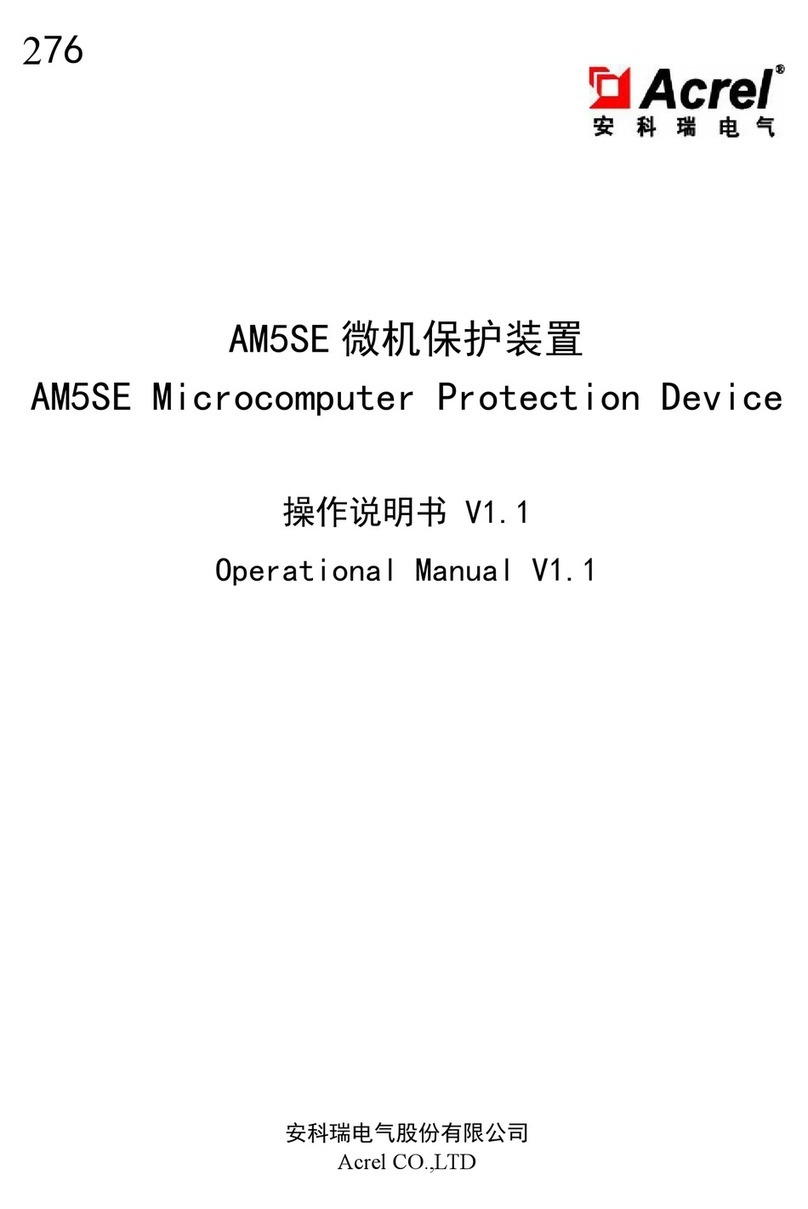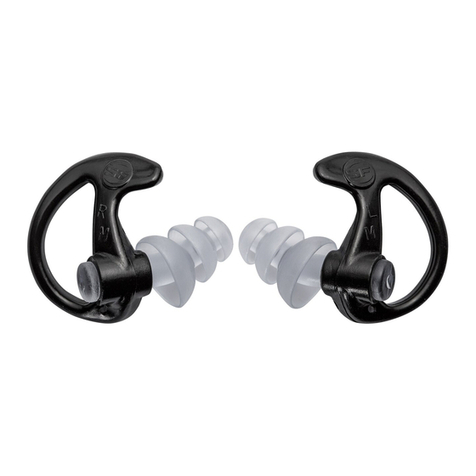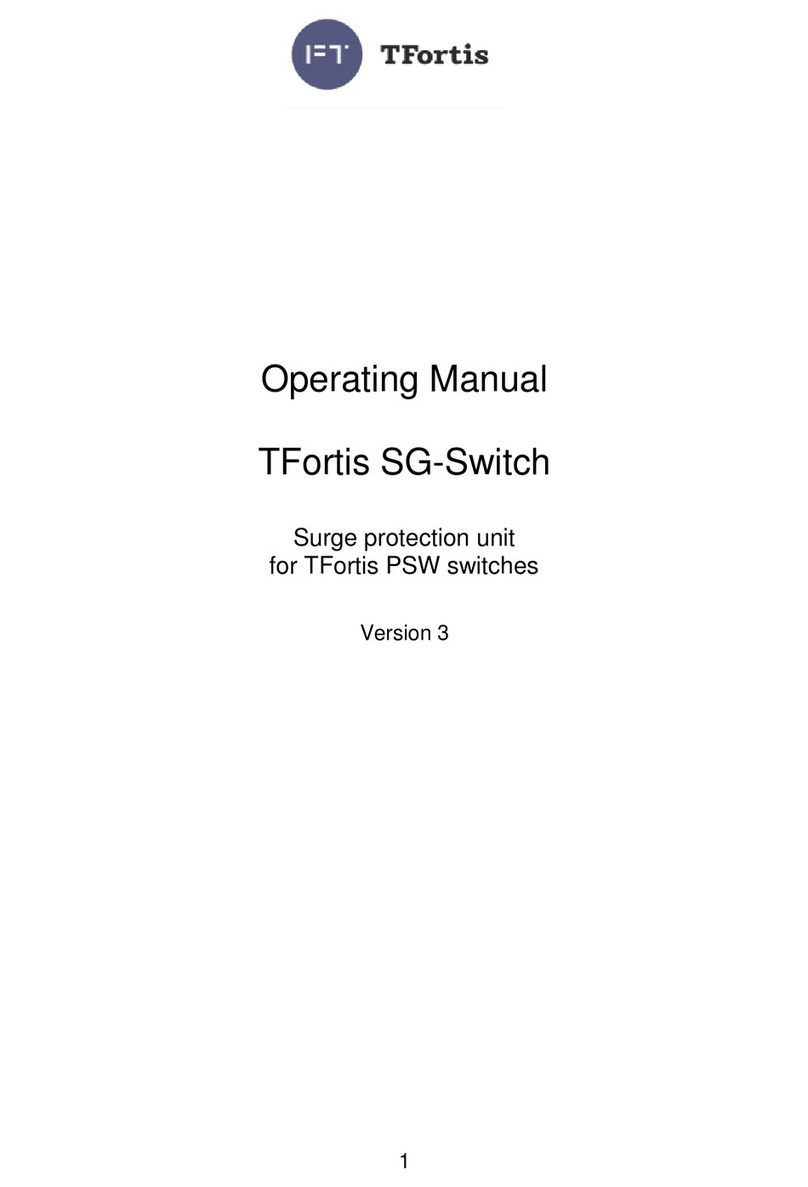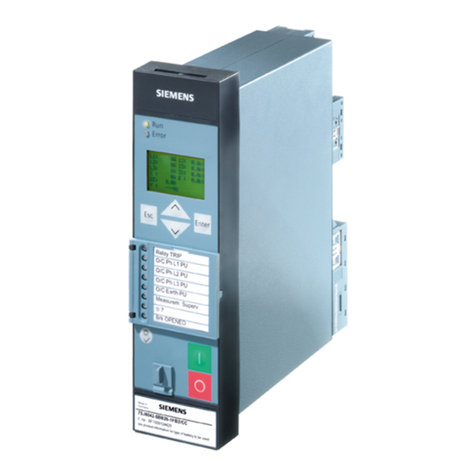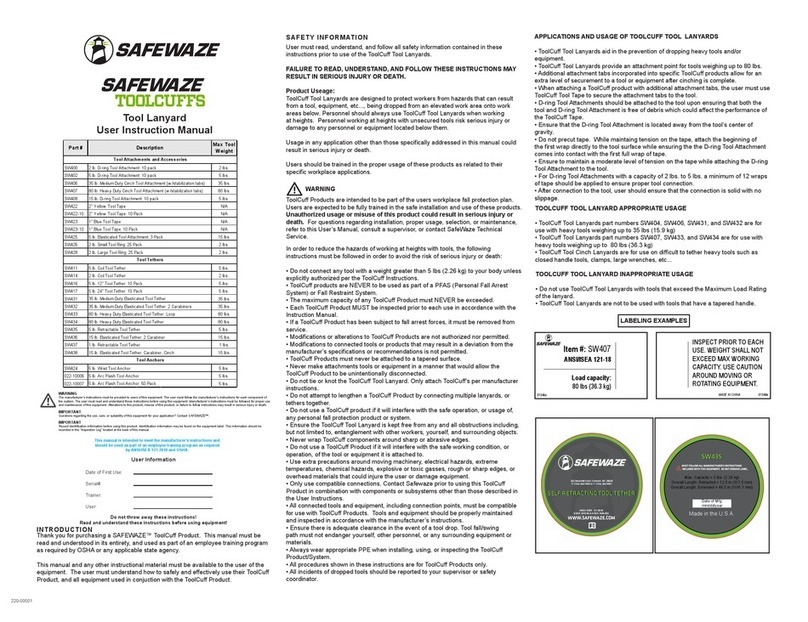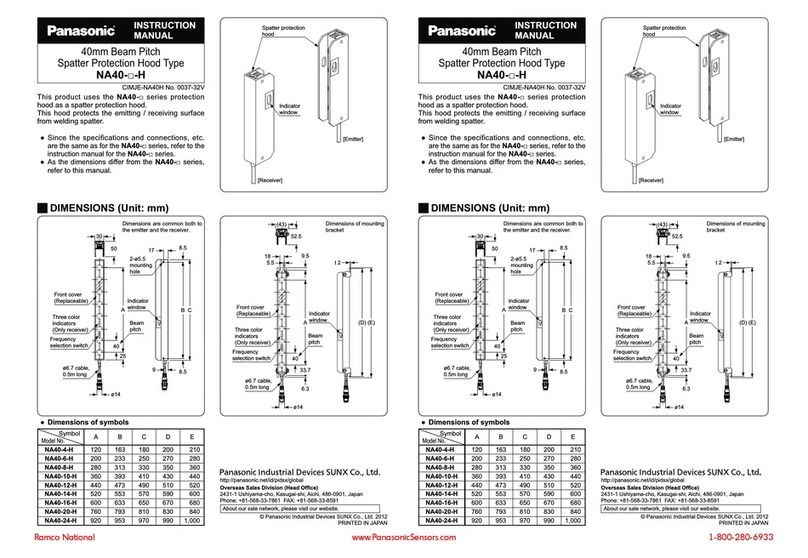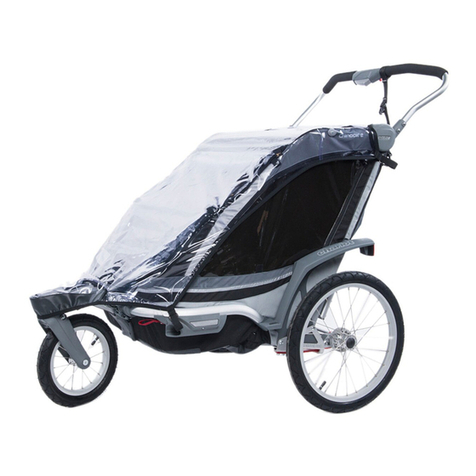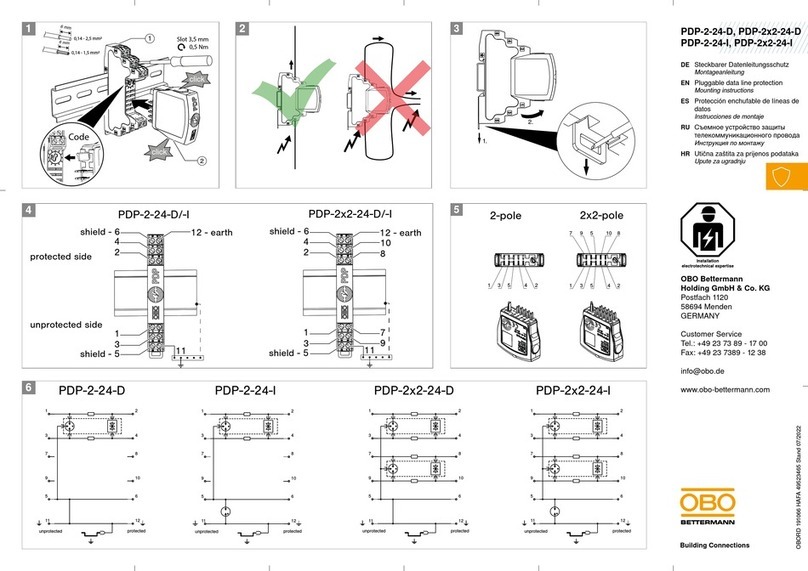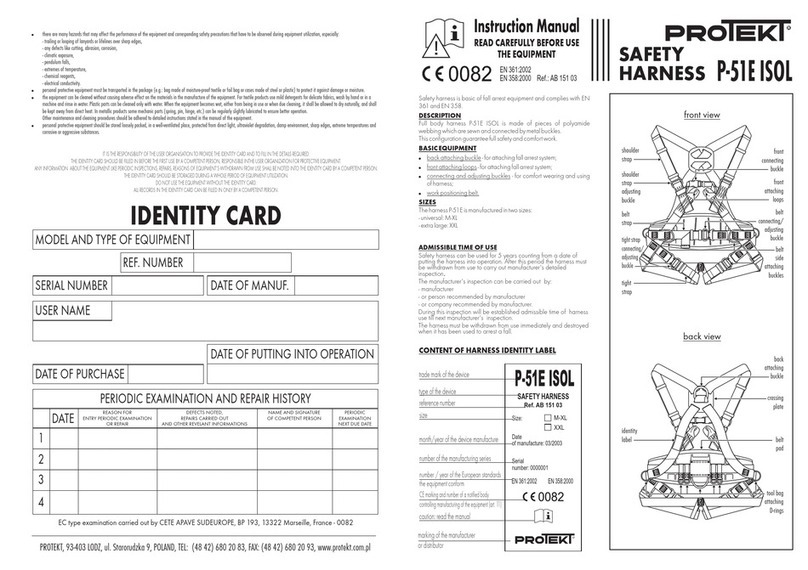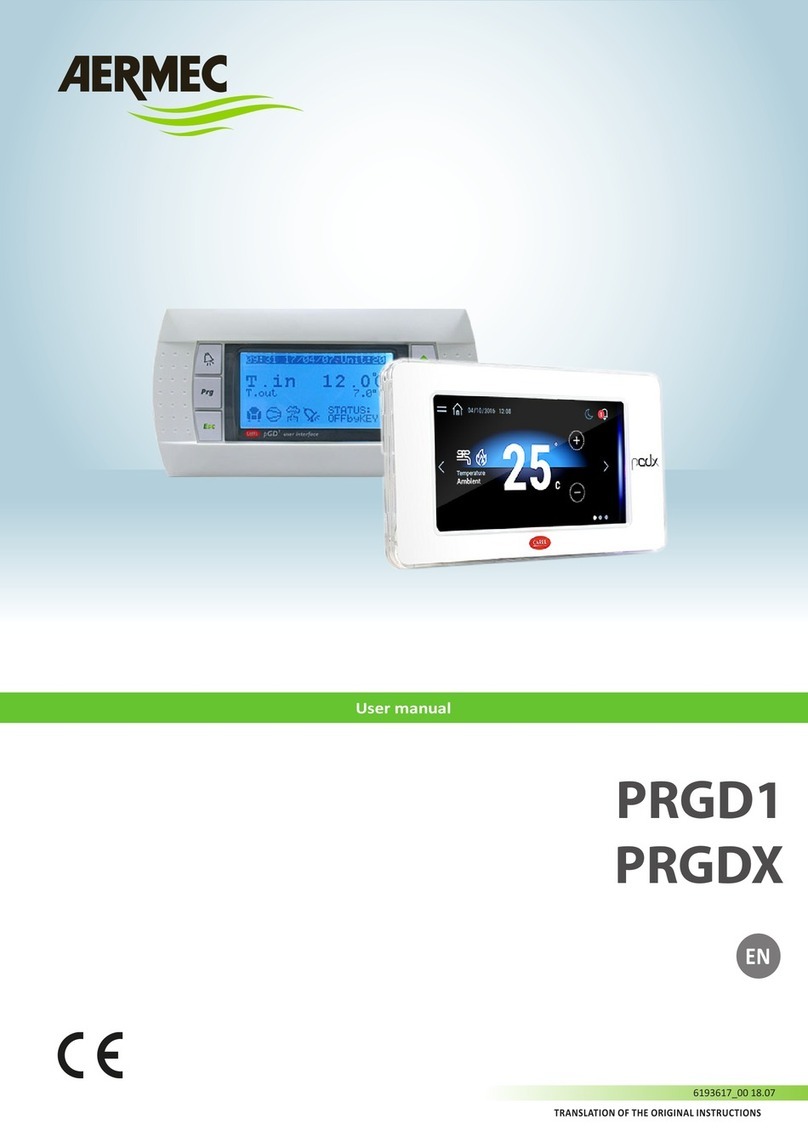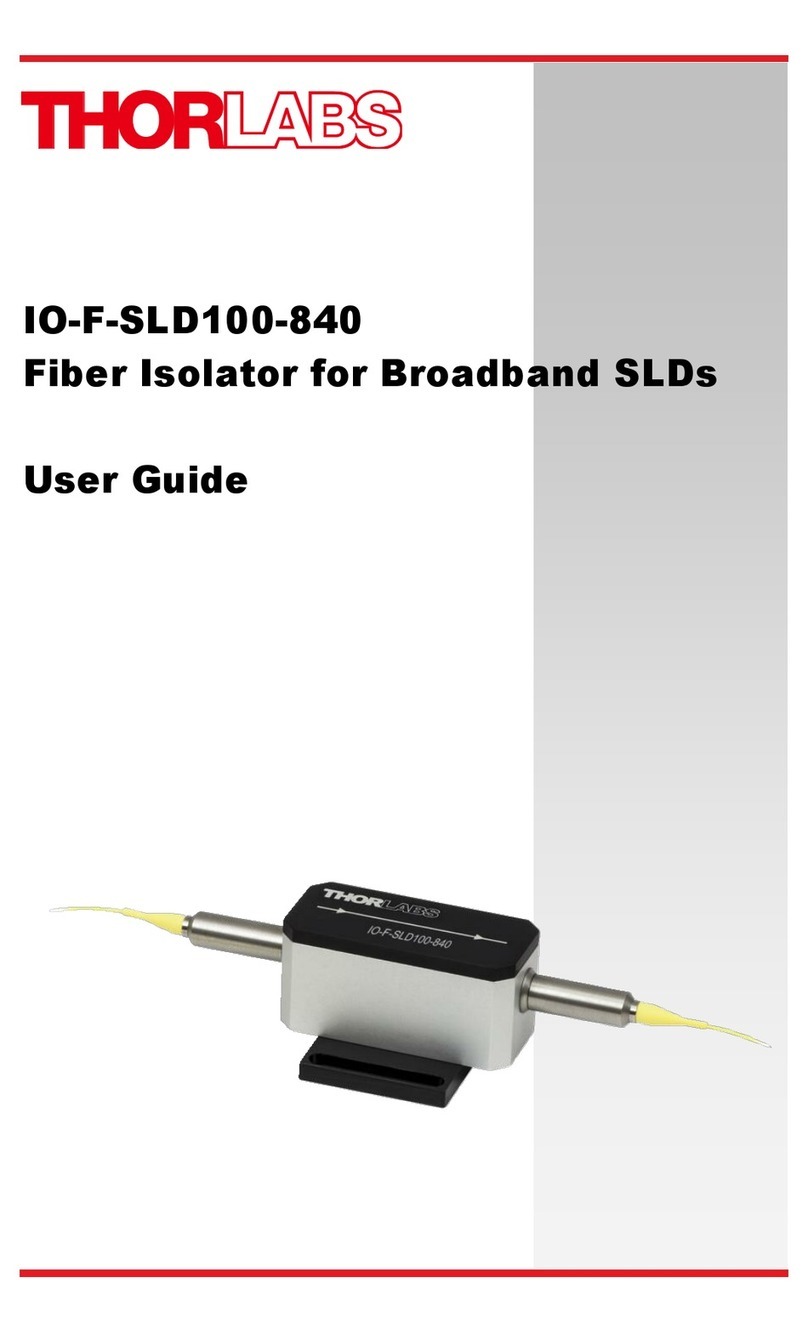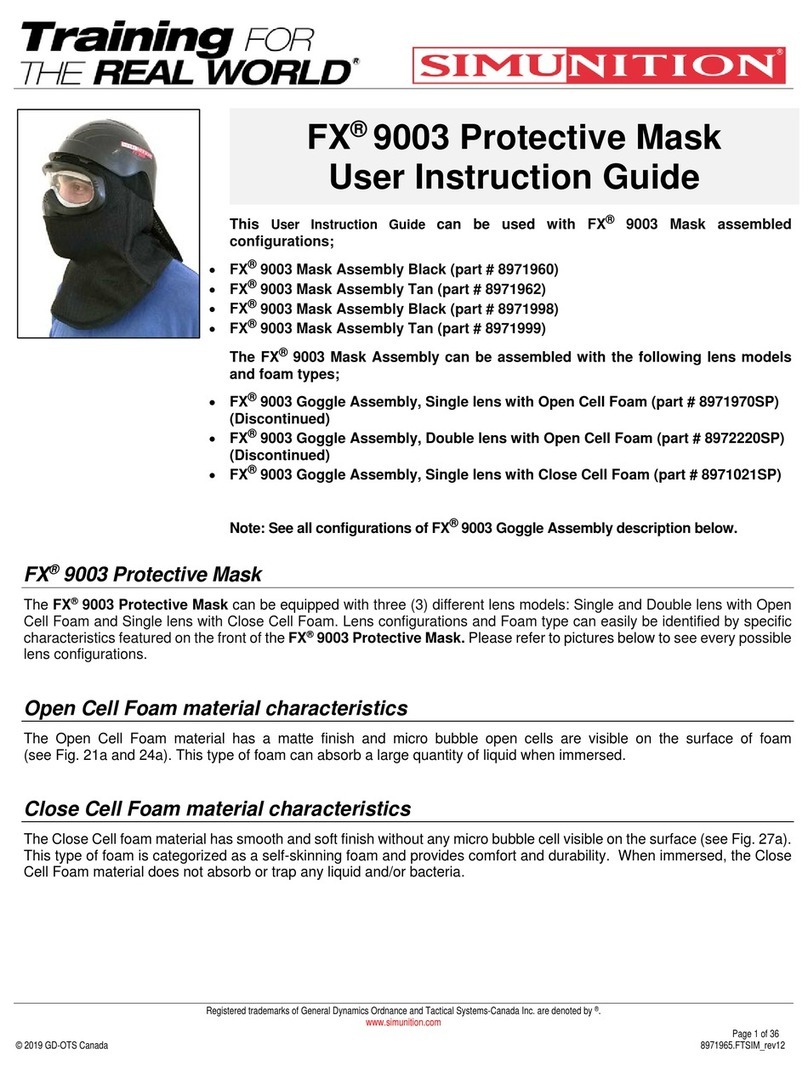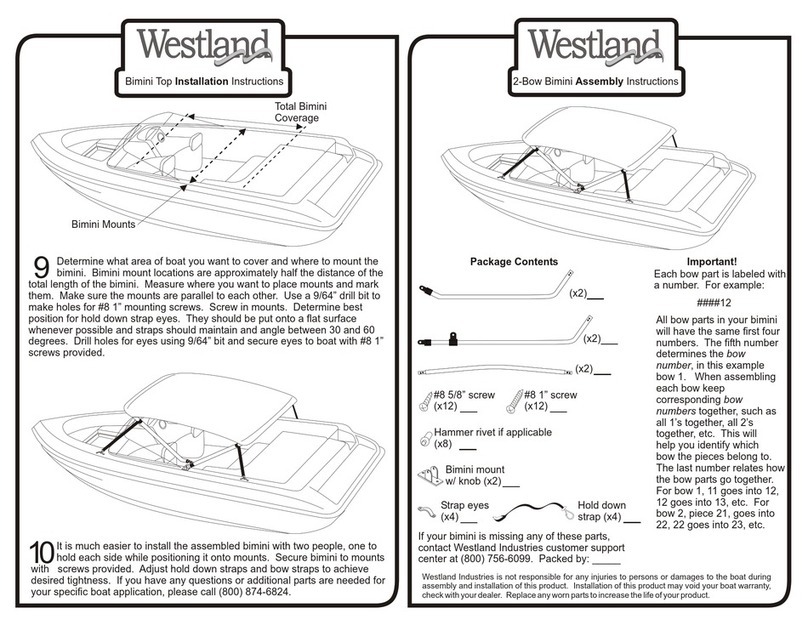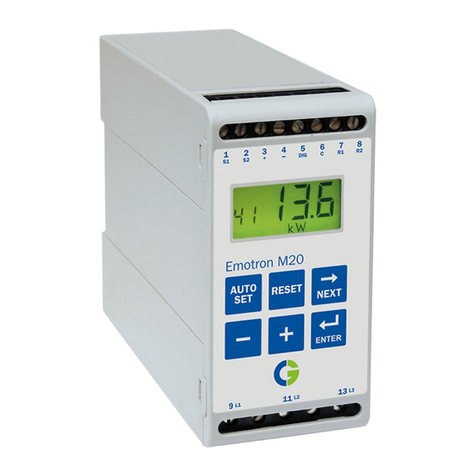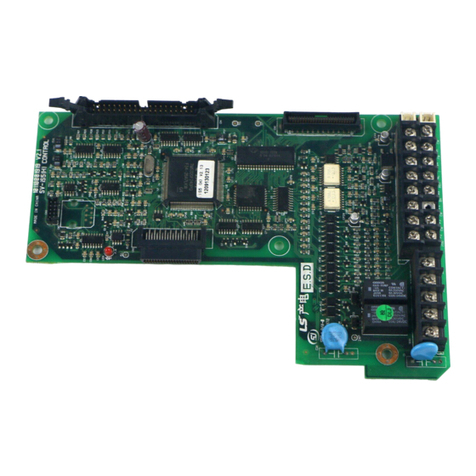Bornack FALLSTOP FS BK User manual

EN
EN 353-2:2002
User Manual
FALLSTOP®FS BK

|
FALLSTOP® FS BK
Guided type fall arrester including
a exible anchor line
INTENDED USE
The FALLSTOP® FS BK is part of personal
protective equipment (PPE) of category
III to prevent falls from heights. The
FALLSTOP® FS BK is a guided type fall
arrester including a flexible anchor line
that arrests falls acc. to EN -. In
combination with a full body harness
acc. to EN ,it serves to secure one
person from falling from ladders, scaf-
folds, roofs etc. No additional fall
arrester is required.
• Maximum number of users: person
• Application temperature: - °C to
+ °C
All other uses are deemed improper. The
company BORNACK will not be liable for
any ensuing damages. The user bears
the sole risk.
FUNCTION
Pulling once on the connecting band
upward toward the anchor point moves
the fall arrester upwards on the rope. If
a force is applied downwards on the
connecting band, e.g. in the event of a
fall, the fall arrester FALLSTOP® FS BK
clamps to the rope. The fall arrester does
not stop abruptly but cushions the fall
impact by means of defined friction on
the safety rope and reduces the fall
impact force to max. . kN.
Subject to technical changes
BRIEF DESCRIPTION

EN
Panic function (Type FSBK):
The fall arrester needs to be moved
manually to adjust the length of the
safety rope, in particular in horizontal or
tilted applications.
If a fall occurs at this moment, it cannot
be ruled out that the user will grab the
unlocked fall arrester in a panic and
therefore, despite a fall, there is no pull
on the connecting band: the above-men-
tioned clamping function would be
obstructed and safe blocking would not
be possible. Therefore, the fall arrester
type FSBK has a second independent
clamp function (panic lock) that securely
stops the fall arrester on the safety rope
by clenching the device.
EQUIPMENT
• The FALLSTOP® FS BK fall arrester (rope
shortener) made of aluminium that
arrests falls acc. to EN -
• Type FSBK also: Panic lock
• blue connecting band made of poly-
ester, length . m (information incl.
pivot lever and connector acc. to
EN )
• flexible guide, manufactured made of
modern polyamide fibres:
- BORNACK kernmantel rope TECSTATIC
mm (TECS.)
- BORNACK twisted rope PROFI mm
(PROFI.)
- useful length respectively up to the
red limit ball
• optional: rope protector made of
plastic above the fall arrester, length
. m
• Connector acc. to EN made of
aluminium or steel
• Type FSBK plus: spring as safety
reserve for unlocking
USE
• Securing
• Arresting
• Restraint
BRIEF DESCRIPTION

|
Connector
acc. to EN
Shrink hose
Connector acc. to EN
Rope end stitching or
splice with label
Red limit ball
Blue connecting band
FALLSTOP® FS BK02
Fall arrester with
identification
Flexible guide
(Safety rope)
Pivot lever
Rope end securing: knot
with cable tie or end splice
FALLSTOP®FS BK02

EN
Connector acc. to EN
Connector
acc. to EN
Blue connecting
band
Panic lock
Spring as safety
reserve for unlocking
FALLSTOP® FS BK03
Fall arrester with
identification
Shrink hose
FALLSTOP®FS BK03
Pivot lever
Rope end stitching with
identification
Red limit ball
flexible guide
(Safety rope)
Rope end securing: knot
with cable tie or end seam

|
Safety rope
Rope protector
ROPE PROTECTOR (OPTIONAL)
The optional rope shortener is located between the fall arrester and shrink hose
(type FSBK) and/or between the fall arrester and the spring as safety reserve for
unlocking (type FSBK).

EN
Always check every time
before use!
• The personal protective equipment
(PPE) may no longer be used in the
case of even very minor faults.
• Faulty PPE components may only be
tested or repaired by BORNACK or in a
workshop authorised in writing by
BORNACK.
• Regular inspections are essential
because the safety of the user depends
on the eciency and durability of the
PPE.
• The user must have completely read
and understood the User Manual
before use.
VISUAL INSPECTION
• Check that the rope protection is
complete.
• All seams are undamaged. There are
no visible signs of damage to the
textile components nor can faults be
felt with the hands.
• Housing and connectors acc. to EN
show no obvious signs of damage and
are not bent. Fasteners of the connec-
tors acc. to EN and their locks are
functional.
• No knots in the safety rope. Exception:
if the rope end securing on a safety
rope needs to be a knot, this must be
in place.
• Red limit ball is on the safety rope and
cannot be moved.
• The last inspection by an expert was
carried out within the past months.
FUNCTION TEST
• Hold the safety rope below the fall
arrester and pull the fall arrester on
the blue connecting band toward the
anchor point. The fall arrester must
slide easily over the safety rope.
• Hold the safety rope above the fall
arrester and pull the fall arrester on
the blue connecting band on the
safety rope toward the lower rope end
securing. The fall arrester must be
clamped tightly to the safety rope.
INFORMATION BEFORE USE

|
BLOCKING
A The fall arrester can be blocked at a
position on the rope by pulling the
connecting band downwards toward
the rope end securing.
ATTENTION:
When the fall arrester type FSBK
blocks, ensure that there is enough
space for unlocking.
B Also on type FSBK: This device can
also be blocked by the panic lock. In
the event of a fall, the user may try to
grab the device and press the panic
lock with their hand: the device
blocks.
FALLSTOP® FS BK IN USE
AB

EN
UNLOCKING: TYPE FSBK02
C Open the pivot lever upwards toward
the anchor point or alternatively, pull
the blue connecting band upwards.
Now the fall arrester can be moved on
the safety rope again to the required
position and the safety length can be
adjusted.
CAUTION: RISK TO LIFE!
When unlocking the fall arrester, the
thumb should never be below the pivot
lever or connecting band! In the event of
a fall, the thumb would be injured and/
or (type FSBK) the blocking function
of the device is restricted.
CAUTION: RISK TO LIFE!
Take your hand from the device again
after adjusting the safety length!
LOCKING: TYPE FSBK02
D To unlock, keep the safety rope taut.
E Open the pivot lever of the fall
arrester upwards and hold open with
the thumb.
FALLSTOP® FS BK IN USE
C
ED

|
FALLSTOP® FS BK IN USE
CAUTION: RISK TO LIFE!
When unlocking the fall arrester, the
thumb should never be below the pivot
lever or connecting band! In the event of
a fall, the thumb would be injured and/
or (type FSBK) the blocking function
of the device is restricted.
F Move the device approx. - cm
toward the anchor point: this unlocks
the device. Now the device can be
moved on the safety rope again and
the safety length can be adjusted.
CAUTION: RISK TO LIFE!
Take your hand from the device again
after adjusting the safety length!
ATTENTION:
When the fall arrester type FSBK
blocks, ensure that there is enough
space for unlocking.
G The safety rope of the FALLSTOP® FS
BK type FSBK has a spring on the
upper end below the shrink hose. The
spring path serves as a safety reserve
for unlocking.
F
G

EN
SAFETY ROPE
H Lay out the safety rope carefully. The
rope may not be knotted.
I Do not twist the twisted rope (type
PROFI) against the ‘rope rotation’.
This leads to the creation of kinks and
damage. These kinds of damaged
ropes need to be replaced.
ATTENTION:
The FALLSTOP® FS BK safety rope may
only be used in combination with the
supplied FALLSTOP®FS BK fall arrester.
Other runners are not allowed!
CAUTION: RISK TO LIFE!
The conditions of wet or frozen areas
may vary! There is little to no braking
eect on wet or frozen ropes!
FALLSTOP® FS BK IN USE
H I

|
FALLSTOP® FS BK IN USE
ATTACHMENT TO THE ANCHOR POINT
J Attach the connector (EN ) of the
safety rope to a secure anchor point.
CAUTION: RISK TO LIFE!
Anchor points must be adequately
strong (observe EN and/or DGUV
Regulation -)!
CAUTION: RISK TO LIFE!
When selecting the attachment point,
minimise the fall height and/or the free
fall!
K Protect the connector acc. to EN
against shearing forces (bending).
CAUTION: RISK TO LIFE!
The FALLSTOP® FS BK may not be used in
a noose or cow hitch! Instead, create an
attachment point with a tape sling (e.g.
PROTEC S)!
Read the User Manual of
the connector according to
EN .
J
K

EN
L
M
FALLSTOP® FS BK IN USE
ROPE PROTECTOR (OPTIONAL)
L The rope shortener serves to protect
the rope on edges, roof ridges, pipes,
scaffolds etc. The rope shortener is
positioned so that the affected rope
section is covered by the rope short-
ener.
Moving the rope shortener:
MKeep the rope taut. Move the rope
shortener to the required position, do
not pull.

|
ATTACHMENT TO THE FULL BODY
HARNESS
Observe the User Manual of the
full body harness acc. to EN .
N Hook the connector acc. to EN of
the blue connecting band to the front
or rear D-ring of the full body harness
marked with A. It is recommended
using the front D-ring, if the work
position allows this.
CAUTION: RISK TO LIFE!
No further lanyards may be used
between the connector (EN ) of the
connecting band and the D-ring of the
fall arrester!
O Two individual securing systems FALL-
STOP®BK may not be used in parallel.
FALLSTOP® FS BK IN USE
O
N

EN
SECURING ONE PERSON WHEN
CLIMBING / WITH GUIDED TYPE FALL
ARRESTER
P Attach the FALLSTOP® FS BK safety
rope to the attachment point above
the ascent.
Q Hook the connector acc. to EN of
the fall arrester into the front D-ring
of the full body harness.
R When climbing, the fall arrester also
needs to be moved smoothly on the
rope.
CAUTION: RISK TO LIFE!
Ensure that the fall arrester also moves
during climbing and that there is no
slack rope. Slack rope extends the fall
path.
FALLSTOP® FS BK IN USE
QP
R

|
S Ensure adequate clearance below the
user to prevent impact on a
protruding object or the ground.
ATTENTION:
When starting to ascend near the
ground, it is possible, under unfavour-
able circumstances, that the legs will hit
the ground when the fall is arrested.
CAUTION: RISK TO LIFE!
The conditions of wet or frozen areas
may vary! There is little to no braking
eect on wet or frozen ropes!
FALLSTOP® FS BK IN USE
1.0 m
= 3.0 m
1.0 m
0.5 m
Safety reserve
(Minimum)
Braking path
Fall arrester
(Maximum)
Länge Verbindungsmittel
a
a
a
b
0.5 m Double length
Connection strap
b
a
S

EN
SECURING ONE PERSON ON
PLATFORMS/
/RESTRAINT & POSITIONING
T If possible, select an attachment point
vertically above the work point.
U The anchor point must lie above
where the person is standing.
V Do not select an anchor point to the
side of the secured person! Other-
wise, the person could bang into parts
or a wall.
WWhen working on the fall edge, posi-
tion the arresting device on the safety
rope so that the user can just reach
the fall edge but cannot fall.
X Avoid slack rope.
ATTENTION:
Always keep the safety rope taut. A fall
over the edge should be ruled out. Do
not set the rope length in the moment
when the user moves toward the fall
edge.
FALLSTOP® FS BK IN USE
T U
V
X
W

|
COMBINATION
When combining this product with
other parts, there is a risk of mutual
impairment with respect to the function
and safety. Compatibility must be
assessed during the risk analysis. Only
combine with personal protective equip-
ment that bears a CE symbol. If you have
any questions about compatibility or
you require help with the risk analyses,
feel free to contact BORNACK.
FALLSTOP® FS BK IN USE

EN
SAFETY REGULATIONS
There is a risk to life if these safety
instructions are not observed!
• The personal protective equipment
(PPE) may no longer be used even in
the case of very minor faults.
• Damaged, fall-stressed, dubious
personal protective equipment or
safety devices must be immediately
withdrawn and not used. The equip-
ment may only be inspected by an
expert in compliance with DGUV
(German Social Accident Insurance)
principle -, by BORNACK or by a
workshop authorised in writing by
BORNACK. This must be documented
in the test card.
• Independent modifications or repairs
are not allowed.
• Rope protection is part of the personal
fall prevention equipment and should
be assigned to a specific person.
• The personal protective equipment
may only be used by qualified staff
that are familiar with the material.
They must be proficient in handling
the personal protective equipment
and must have been briefed about the
possible risks associated with its use.
• In accordance with the accident
prevention guidelines (UVV), the users
of personal protective equipment
against falls (Category III) must attend
a theoretical training course and a
practical training course. Make use of
the training competence of the
BORNACK training centres: info@
bornack.de
• Clothing and shoes must be suitable
for the task at hand and the weather
conditions.
• Only use if fully fit and healthy. Health
impairments can jeopardise the safety
of the user when working at heights or
depths.
• If this PPE is used as an arrester system
(free fall is possible), only full body
harnesses that comply with EN
may be used.
• Calculation of the possible fall path
when climbing if all necessary PPE
components are used correctly
without slack rope: double length
connecting band ( x . m = m) +
braking path fall arrester (max. . m)
+ safety reserve. m.
• Before use, ensure adequate clearance
below the user to prevent impact on a
protruding object or the ground.
• Protect personal protective equipment
during storing, use and transportation
against the effects of heat (e.g.
welding flames or sparks, burning
cigarettes) and chemicals (e.g. acids,
alkalis, oils) and mechanical impact
(e.g. sharp edges).

|
• The combinability and protective
eect of the PPE must be checked for
each hazard situation (risk assess-
ment).
• Parts of complete systems that were
delivered may not be replaced.
• If a casualty hangs motionless in a full
body harness for a longer time, blood
cannot flow back from the legs and/or
the flow may be interrupted. This can
lead to a suspension trauma, a circula-
tory shock with serious to fatal conse-
quences.
• Before starting work, the responsible
person must draw up a plan of rescue
measures that defines how to rescue
casualties quickly and safely and
ensures first aid measures. Casualties
must be rescued within minutes.
BORNACK can help you draw up tailor-
made rescue concepts and includes
these in the necessary training
courses.
E-mail hotline: info@bornack.de
• The local safety guidelines (e.g. in
Germany, the DGUV Regulations
- and - issued by the
professional associations) and the
accident prevention guidelines for the
specific industry (UVV) must be
observed.
SAFETY REGULATIONS
This manual suits for next models
1
Table of contents
